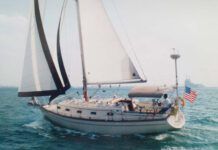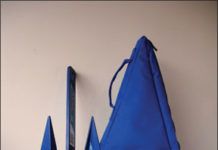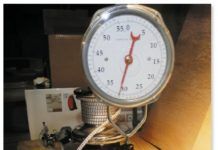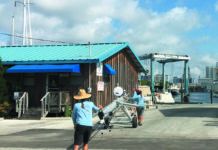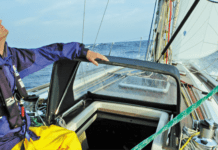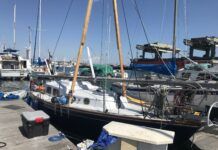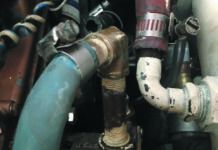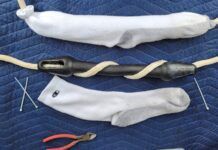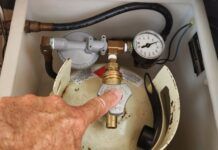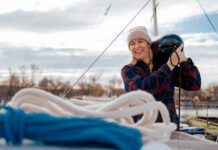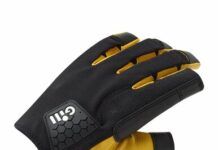
SOLAS rafts, which also have specified equipment stored in the raft.
2. PS testers evaluate life rafts prior to on the water testing for our comprehensive
life raft test, featured in our “Survival at Sea” ebook series
(www.practical-sailor.com/products).
When it’s rough enough to cause a carbon fiber reinforced, 60 foot racing sailboat to disintegrate, what chance does one have in a 130 pound, inflatable life raft? The answer is: a pretty good chance. The reason why is that over the last couple of decades there’s been a steady improvement in life raft design and construction. Higher modulus materials, better seam bonding, more reliable bladder valves and features such as inflatable boarding assists, improved arch and canopy designs and more efficient ballast bags have added up to improved survivability for the raft and its occupants .
The tricky balancing act is the total weight of canister, raft and equipment packed inside. For example, The fabric used in the manufacture of SOLAS life rafts is heavier and higher tensile strength than the material used to make ISO 9650. The SOLAS A-pack equipment load includes water and food and is another major source of weight. When all is packed into a raft canister the 6 person SOLAS raft weight with an A-Pack is 163 pounds.
A six-person ISO 9650 offshore raft, in a canister, weighs as little as 89 pounds. The lighter material and fewer supplies along with a smaller volume CO2 inflation tank contribute to the lighter weight.
Escoffier was able to launch the heavy SOLAS raft that had been cockpit stowed. He had been unable to retrieve his abandon ship bag that was stowed forward and was underwater. Having the in-raft-stowed A-pack with its food and water supplies was beneficial. ISO rafts provide 500ml/person water but no food supplies. The idea is that such needs would be compensated for with the load out in the abandon ship bag.



